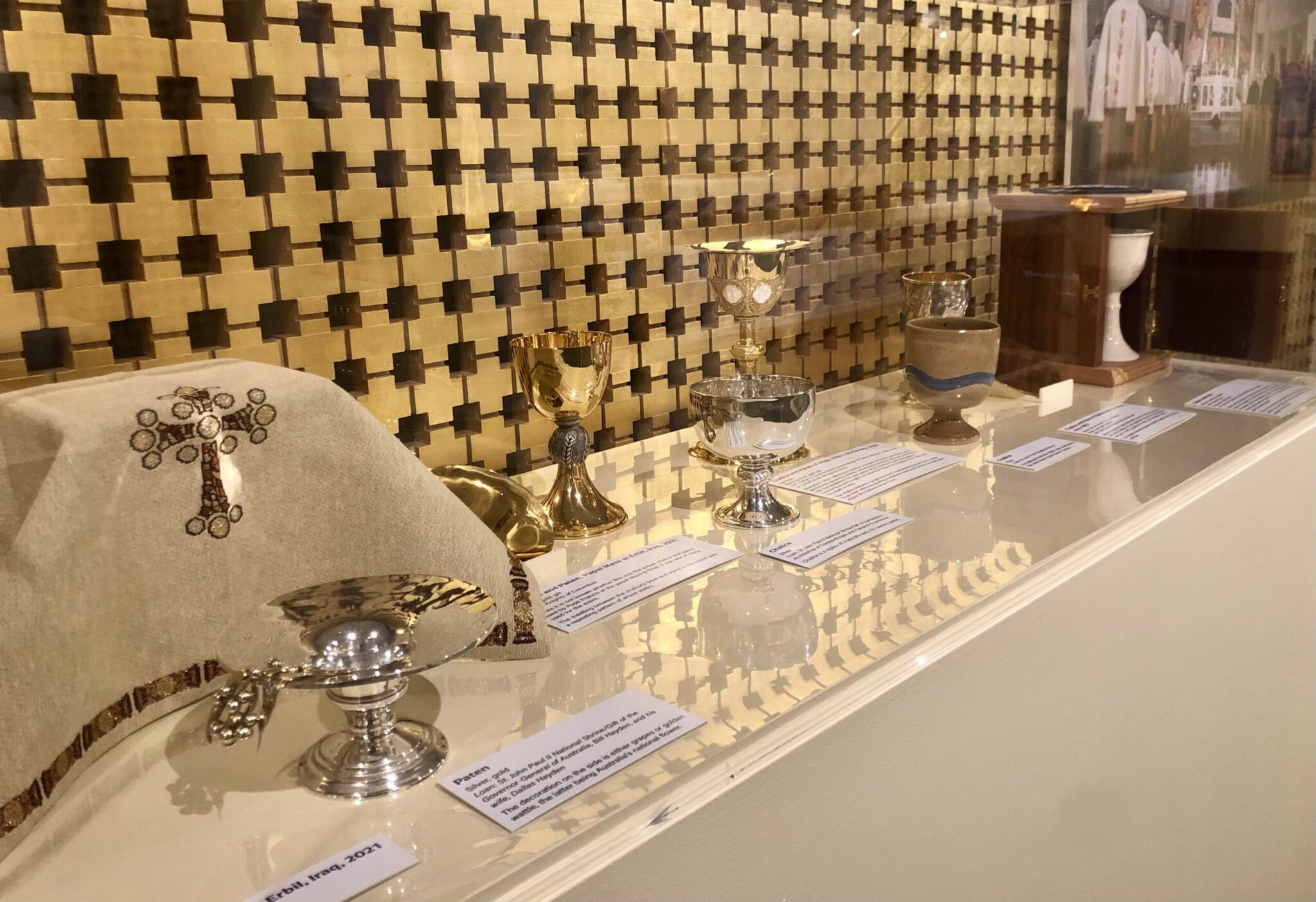Exhibit on the Eucharist set to close at McGivney Center
The exhibit — part of a national push to celebrate the Catholic sacrament — rounds out its five month run this weekend.

Remi Clark-Redstar, Contributing Photographer
The Blessed Michael McGivney Pilgrimage Center has on display a religious garment worn by Pope Francis within a collection of church heirlooms, all connected to the Eucharist.
Four months after it first opened, the McGivney Pilgrimage Center’s “True Presence: the Eucharist in Art and History” exhibit is set to close on Sunday. Inspired by the U.S. Conference of Catholic Bishops’ push to re-engage with the Eucharist, the exhibit took part in a national three-year celebration of the Sacrament.
The Center’s namesake — Blessed Michael McGivney of St. Mary’s Parish in New Haven — became the first person from Connecticut to be beatified by the Catholic Church and is on the way to becoming a saint.
Displaying an altar replica and works of art, the exhibit highlighted the Eucharist, one of the seven Sacraments of the Holy Catholic Church. In Roman Catholicism, the Eucharist is the physical manifestation of Jesus Christ, consumed during weekly mass as spiritual nourishment. “True Presence” explores this practice of the church, recounting its history and its significance.
“It’s about teaching people about what the Eucharist actually is,” said Clare Bernard, a lifelong Catholic who visited the exhibit. “It is the center of our beliefs, so I attended because I wanted to learn more.”
With education at the heart of the exhibit, the gallery explains the Biblical connections found in the Gospels and the Old Testament, their impact on the church’s doctrine. The gallery’s first set of relics — an ornate receptacle that holds the Eucharistic Sacrament and mother of pearl creche — leads into a description of the Eucharist’s presentation in art and how it serves as a spiritual connector. A wall of artwork features recreations of famous Biblical scenes and depictions of priests partaking in the Liturgy of the Eucharist.
Joe Luchene, a recently converted Catholic who visited the exhibit, said he was fascinated by both the Eucharist and the exhibit itself. Luchene noted that his reverence of the Eucharist translates into his day-to-day life.
“When we hold the Eucharist in our mouth, the tongue is like a pedestal, and we hold our tongue accountable in this moment to hold the Eucharist,” said Luchene. “When we leave church, the question becomes how often do we hold our tongue to that same standard.”
Reflection on the Eucharist and its purpose is very much a part of “True Presence.” Visitors are consistently prompted to consider the Eucharist from both a spiritual and academic standpoint.
Finally, before one exits, there is an interactive screen dedicated to the miracles connected to the Eucharist. They are chronicled on a website created by the late blessed Carlos Acutis, who was recently put on the path for canonization by Pope Francis.
“We really appreciate all the beautiful artwork,” Megan Bernard, Clare Bernard’s daughter, said in reference to the artistic cornucopia within the gallery, “but most importantly for me is the faith.” “True Presence: the Eucharist in Art and History” remains on display until Sept. 8 in the Jean B. Migneault Gallery of the Blessed Michael McGivney Pilgrimage Center.







